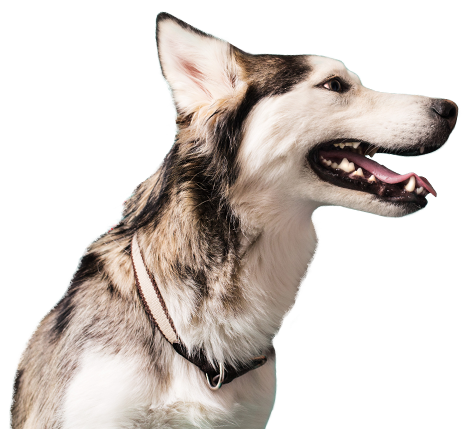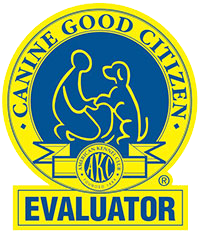
We all understand how hot it can get in Florida. We also realize that a dog may die when left inside of a hot car. But I must tell you that in over 30 years of practice, I have not had a client bring in a pet with heat stroke after being left inside a hot car. Thankfully, the word has gotten out to the public about the deadly consequences of leaving your dog in a car.
Unfortunately I still see cases of heat stroke, but they present quite differently. The story usually goes something like this:
Mr. Brown has decided to get into shape and lose some weight. It’s a warm day in the 80’s, so he decides that a long walk is in order. He leashes up the family dog, Chester, who has also gotten a little porky and decides this will be great for the two of them. Mr. Brown puts on a white hat, a tank top and shorts and goes out the door carrying a bottle of water. He will be just fine. Chester goes out the door 10 lbs. overweight and in full coat, which happens to be nearly black.
As the walk progresses, Mr. Brown begins to sweat profusely. He wipes his brow, takes a swig of water and smiles to himself. What a great workout, he thinks. He looks down at Chester who is plodding along and wagging his tail. Boy, doesn’t he look happy?
As the walk goes into the second mile, Chester’s pace has begun to slow a bit but the tail keeps on wagging. He continues to pant but now it is at an extremely fast pace.
“Boy, Chester. You really are out of shape. Let’s pick up the pace and get some of that weight off of you,” says Mr. Brown.
As the walk progresses, Chester’s tongue now is lolling out of his mouth. It is extended dramatically. Even Mr. Brown notices the difference, so he turns around and heads for home. He is not too worried because Chester is still wagging his tail. He loves this walk!
After arriving home, Chester collapses on the tile floor and continues to pant at an extremely fast pace. Mr. Brown offers him some cold water because he is obviously thirsty. Why else would he be panting so hard? Chester takes a few laps of water and falls over on his side. Mr. Brown calls his name. “Chester? Chester?”
Chester is not responsive and Mr. Brown is becoming concerned. He loads Chester in the car and drives him to his veterinarian.
Once at the clinic, the technicians rush him to the back and take a temperature. It registers 108 degrees. Chester is immediately diagnosed with heat stroke. His body is wetted down and fans are put on Chester to cause a slow decline in body temperature.
Although Chester’s temperature was able to be lowered, he did not survive. The extreme temperatures throughout the body not only caused heat stroke in the brain, but also irreparable damage to the lining of the intestines and the organs of the body resulting in death.
Recognizing the Signs of Heat Stroke
The key points to understand:
- Mr. Brown went for the walk with a body temperature of 98.6. Chester started his walk at 102.2.
- Mr. Brown was able to deflect heat with his white clothing. Chester’s dark coat absorbs heat.
- Mr. Brown was able to sweat and allow the sweat to evaporate thus cooling his body. Chester only has sweat pads on his feet.
- Mr. Brown felt a bit warm during the walk. He was losing sweat and body fluid, so he replenished himself with a gulp of water. He felt much better and was ready to keep on going. Chester’s body temperature was continuing to rise. 103, 104, 105…All he could do was to try to lose heat through panting. However, since he was also walking, He was exercising and putting more calories (heat) into his muscles. He could not pant fast enough to keep his temperature steady. Over time, it was steadily increasing. He was not losing body fluids. He was not thirsty or dehydrated. He will, of course, put his hot tongue into a cool bowl of water.
Sadly, most owners would miss these signs of heat stroke. You must realize the limitations that dogs have on controlling their body heat when out in ambient temperatures above 80 degrees.
How to Avoid Heat Stroke in Your Dog
- Always acclimate your dog to walks. Start out slow and build up a tolerance to exercise.
- Do not use walks to make your dog lose weight. If your dog needs to lose weight, decreasing his caloric intake is the way to do that. Walks are most useful to strengthen muscle and lubricate joints.
- Walk in the cooler times of day: early morning or late in the evening.
- Walk on the grass or in the shade. Avoid the black asphalt.
- Wet your dog down before a walk! Saturate your dog’s body and head to help use evaporation to keep his body cool. He will be dry and more refreshed when returning home.
If you suspect your dog is overheated, you may take a rectal temperature. If it is over 105 degrees, seek emergency medical attention. If it is over 104 degrees, wet him with cool water and monitor the body temperature.
Never! Never! Never! Put your dog in ice to cool down. The cool down should be done with water and fans. If you see someone walking their dog, and their pet is distressed by the heat, please let the owner know he’s not just “excited” to be outside walking. You may just save his life.

Contact Us
Regular check ups with a veterinarian are important for your pet's health. Contact us today to schedule your next appointment.





